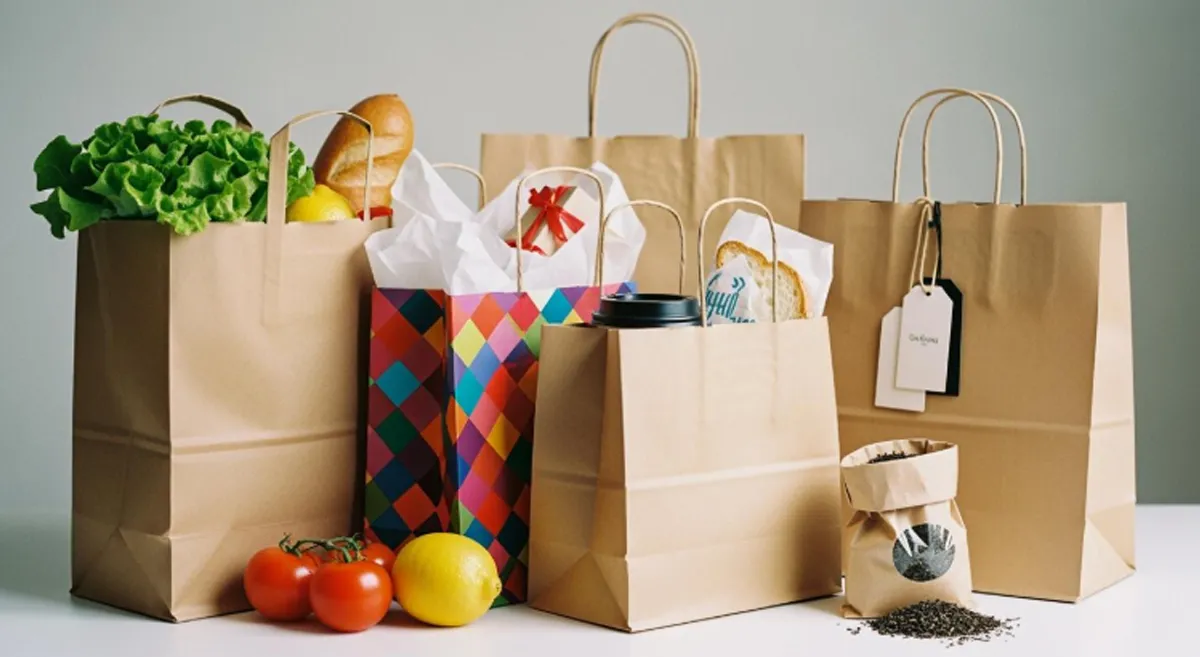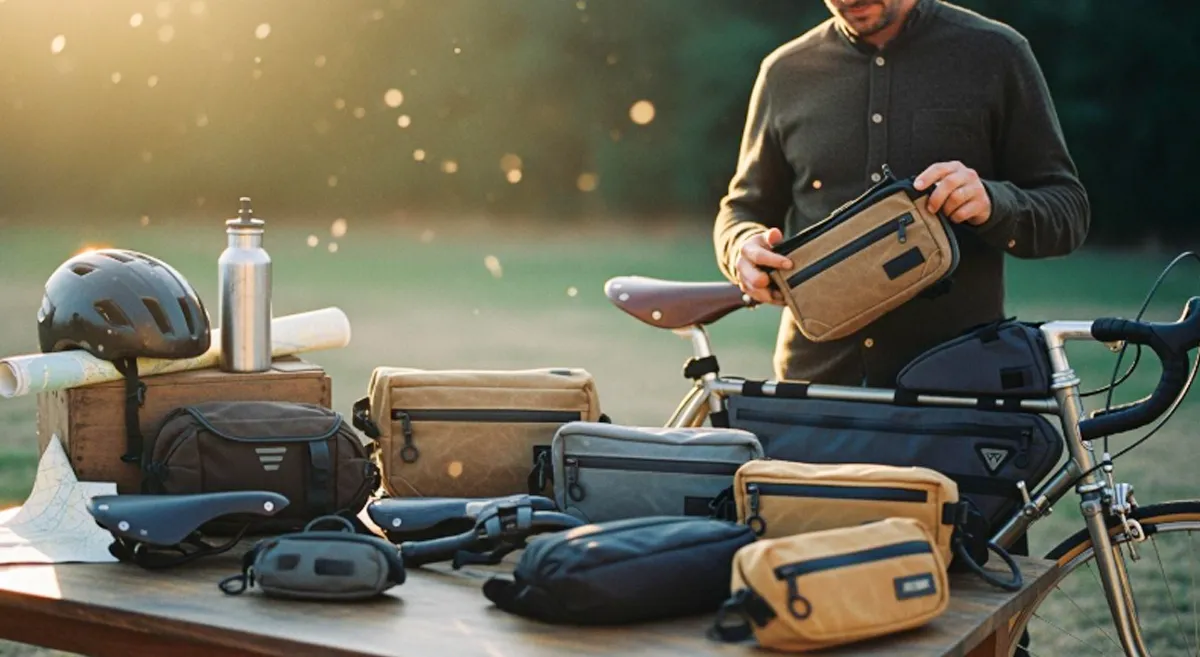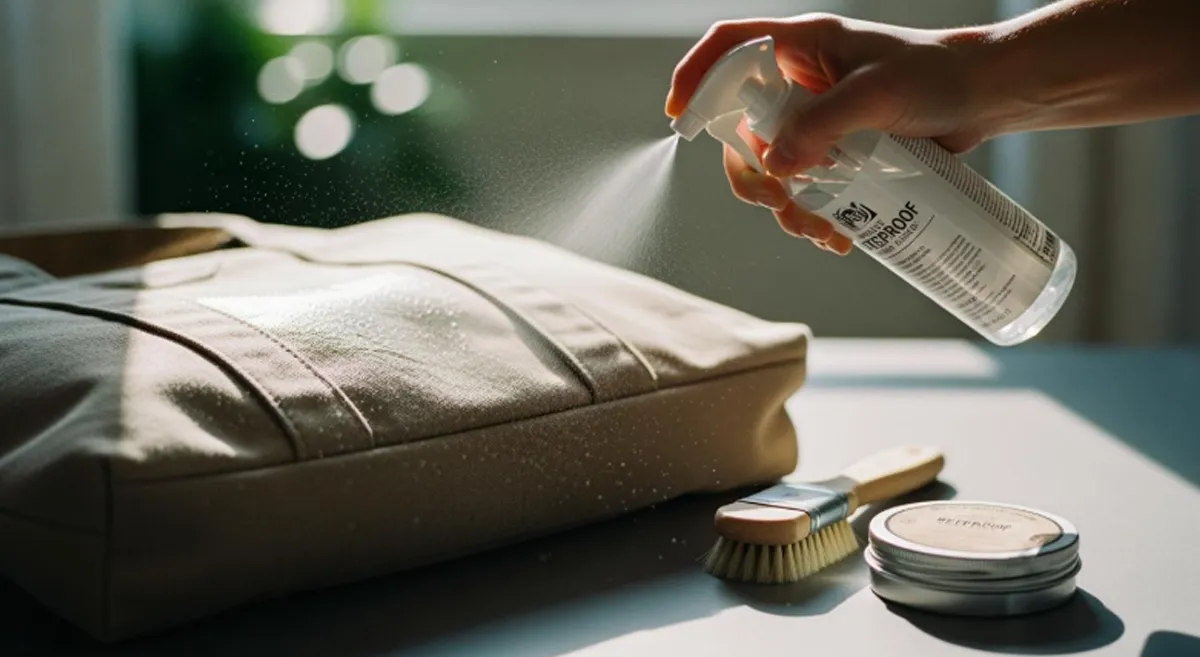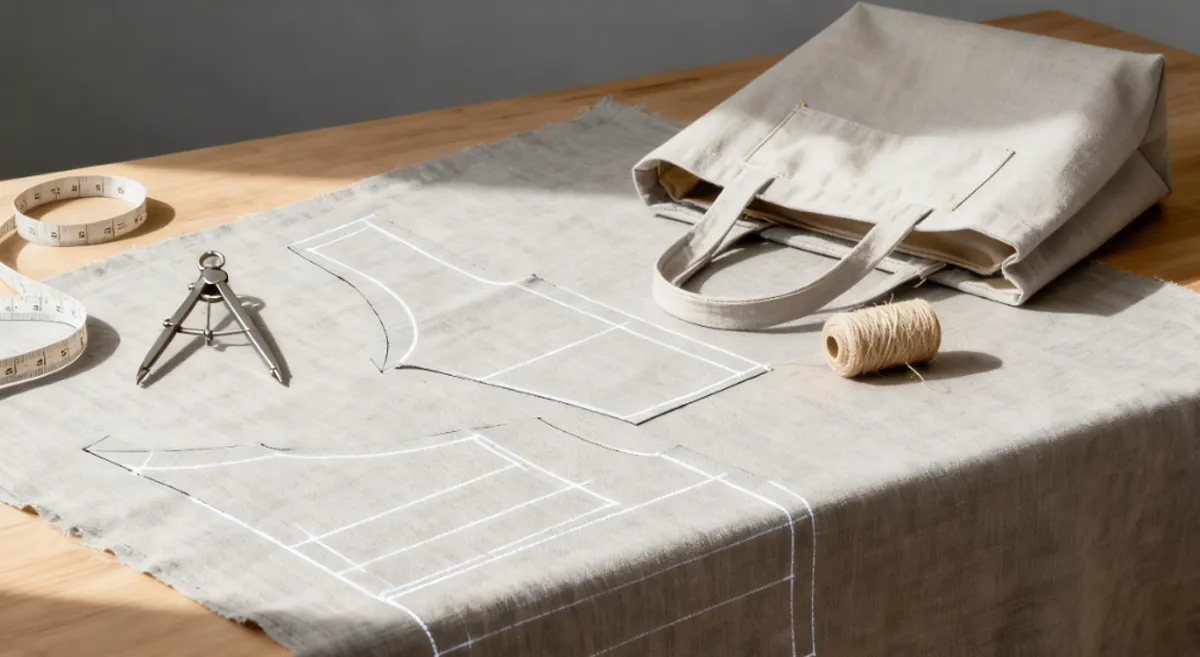When you think about the tote bag manufacturing process, it all begins with selecting the right material. You can choose cotton or canvas if you want a bag that lasts longer. Skilled workers cut and sew the fabric, ensuring that each seam is strong for daily use. Handles are added, and printing gives the bag both style and functionality. Finally, quality control checks for any issues, ensuring that you always receive a durable and high-quality tote bag.
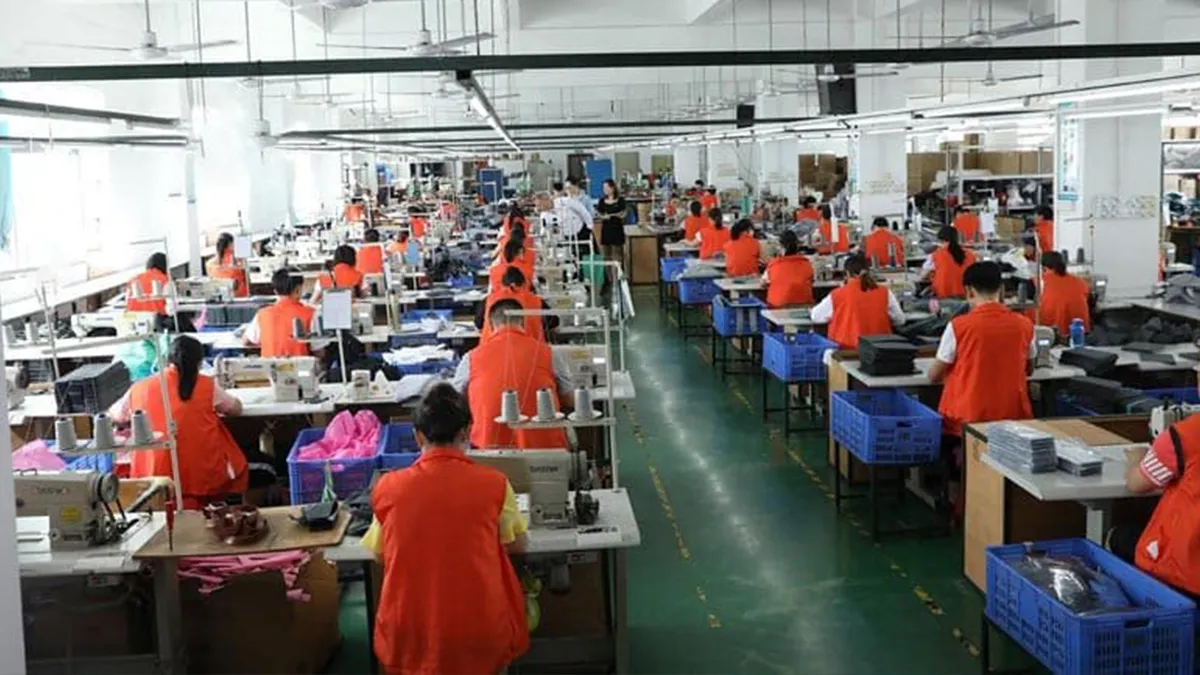
Key Takeaways
- Picking the right material is very important for a strong tote bag. Cotton, canvas, and polyester all have special good points.
- Eco-friendly materials help keep the earth safe. Try to find certifications like Fair Trade and GOTS when you get materials.
- Designing your tote bag lets you make it your own. You can pick colors, prints, and features that show your style or brand.
- Prototyping is very important. It helps find problems before making lots of bags. This makes sure the final bag is what you want.
- Quality control checks every part of making the bag. Looking for mistakes helps make sure bags are tough and work well.
- Smart packaging and shipping can save money and help the planet. Use eco-friendly materials when you can.
- Learning about how bags are made helps you see the hard work. Every step helps make the bag good and useful.
- You can buy custom tote bags in small groups. This lets you have special designs without needing many bags.
Material Selection
Picking the right materials is the first step. You want your tote to look nice and last long. It is also good to think about the planet. Let’s look at the most common fabrics and how to get them in a good way.
Fabric Types
Cotton
Cotton feels soft when you carry it. Many people like cotton because it breaks down in nature. It comes from plants that grow again each year. If you care about the earth, cotton is a great choice. You can dye and print on cotton easily. This means you can make fun designs. Cotton bags can wear out faster than other bags. They also cost more money. To help the planet, use your cotton tote many times. Some studies say you should use it over 100 times to help the environment.
Canvas
Canvas tote bags are very popular. Canvas is strong and lasts a long time. It is good for everyday use. In 2025, canvas is expected to be used a lot. People like canvas because it is tough and good for the earth. If you need a bag for heavy things, canvas is a smart pick. Canvas can be made from organic or recycled cotton. It is easy to print on canvas. Your designs will look bright and clear.
Polyester
Polyester is good because it keeps water out. It is also tough and lasts long. If you need a tote for outside or rainy days, polyester works well. It costs less than cotton or canvas. This makes it a good choice if you want to save money. Polyester does not break down in nature. It can hurt the planet more than other fabrics. Polyester feels more fake, and prints may not look as bright. You can find recycled polyester if you want to help the earth.
Tip: Here’s a quick comparison to help you choose:
| Property | Cotton | Polyester |
|---|---|---|
| Durability | Not as strong, can wear out | Very strong, lasts longer |
| Eco-Friendliness | Breaks down in nature, comes from plants | Does not break down, can harm the planet |
| Water Resistance | Soaks up water, not good for rain | Keeps water out, good for rain |
| Comfort and Feel | Soft and nice to touch | Not as soft, feels more fake |
| Customization Options | Easy to dye and print | Can print, but colors may not pop |
| Cost | Costs more money | Costs less, saves money |
Sourcing
Supplier Choice
There are many places to get bag materials. China makes lots of tote bags fast. India is known for handmade skills and earth-friendly fabrics. The US is good for quick orders and custom bags. This is great if you need bags for a special event.
Sustainability
It is important to care about the planet. Picking earth-friendly materials helps cut down on waste. It also keeps the planet safe. Look for suppliers with certifications like Fair Trade, GOTS, or B Corp. These show that workers are safe and methods are good.
| Certification | Description |
|---|---|
| Fair Trade | Makes sure workers get fair pay and are safe. |
| GOTS | Checks that fibers are organic from start to finish. |
| B Corp | Looks at social and earth impact in many ways. |
You can pick organic or recycled cotton to help the planet. Design choices like strong handles and extra bases make your tote last longer. This helps the earth too. The more you use your tote, the more you help the planet.
Design & Prototyping
Design is the first step for your tote bag. You choose how your bag will look and work. This step lets you show your style or brand. You can pick a standard design or add special features. These choices help your tote stand out.
Custom Tote Bags Design
Standard Designs
Standard designs give a classic look. They have simple shapes and basic colors. Handles are short or long and stay in place. These bags are good for daily use. Many brands pick standard designs because they are easy to make. They fit most people’s needs.
| Feature | Description |
|---|---|
| Shape | Square or rectangular |
| Handle | Short or long, fixed |
| Color | Neutral or basic tones |
| Logo or simple graphics |
Custom Features
You can add custom features to make your tote unique. People like bags with quotes and bold pictures. You can choose fonts that match your brand. You can add pockets, zippers, or straps that adjust. These extras make your bag more useful and stylish.
- Quotes that inspire customers
- Fonts that fit your brand
- Simple designs with bold logos
- Artistic prints and messages
- Pockets, zippers, adjustable straps
- Screen printing and embroidery
- Smart logo spots and color picks
Tip: Make your tote look good and show your brand. This helps people notice and remember your bag.
Prototyping
Prototyping is an important step in making tote bags. You get a sample to see and touch before making many bags. This helps you find problems early and fix them.
Sample Creation
The factory makes a sample from your design. You test things like zippers and pockets. You check the print, stitching, and fabric feel. If something is wrong, you ask for changes.
Approval Process
You look at the sample and give feedback. The factory listens and updates the bag. Prototyping helps you fix mistakes before making lots of bags. This step lowers errors and makes the bag better. You get a tote that matches what you want.
Customer feedback and trends help shape design and prototyping. Many people want eco-friendly bags. Brands use organic or recycled materials now. Personalization is popular, so you can add your name or message. People want bags that last and work for many uses. Social media and friends help you pick a brand that feels real and trustworthy.
Cutting
Cutting fabric is very important in making tote bags. This step gives the bag its shape. It also helps factories make many bags at once. Workers can cut fabric by hand or use machines.
Step-by-Step Manufacturing Process: Cutting
Manual Cutting
Manual cutting is good for small orders or special bags. Skilled workers use sharp scissors or rotary cutters. They follow the pattern closely. Workers lay out the fabric and trace the shapes. Then, they cut each piece by hand. This takes more time than machines. But it is best for unique bags or testing new ideas.
Machine Cutting
Factories use machines when they need many bags. Big cutting machines slice through many layers fast. These machines use digital patterns for each piece. Every piece comes out the same size and shape. This makes mass production quick and accurate. Some factories use laser cutting for even cleaner edges. Laser cutting is great for tricky shapes. It saves time and helps avoid mistakes.
Tip: Machine cutting is best for making lots of bags. It gives you fast and even results.
Pattern Layout
Pattern layout means putting shapes on fabric before cutting. You want to use all the fabric and not waste any. A smart layout saves money and helps the earth.
Waste Reduction
Factories now use AI-powered cutting machines. These machines use smart programs to place patterns well. This means less leftover fabric and lower costs. Here’s how pattern layout helps:
- AI machines find the best way to fit patterns.
- Factories place shapes on fabric to use every bit.
- Nesting techniques put pieces close together.
- Almost no fabric gets wasted.
This new way is great for making many bags. It saves money and helps the planet too.
Consistency
Consistency is important when making thousands of bags. Pattern layout makes sure every bag looks the same. You get the same results every time. AI-powered nesting keeps things running smoothly. You avoid mistakes and keep the quality high.
| Advancement Type | Description | Efficiency Improvement |
|---|---|---|
| Advanced Manufacturing | Laser cutting and digital printing | More complex and precise designs |
| Sustainable Materials | Recycled fabrics and eco-friendly leather | Less harm to the earth and more appeal to buyers |
| 3D Printing | Custom handbags with special shapes | More choices for design and custom bags |
Factories use these new ways to work better. You get cool designs, less wasted material, and lower costs. Making many bags is easier and more reliable.
Note: Smart pattern layout and new cutting tools make the process faster and greener. You always get strong and good-looking tote bags.
Printing & Customization
You get to decide how your tote bag looks and feels. Printing and customization make your bag stand out. This part of the tote bag manufacturing process lets you show off your brand, message, or style.
Printing Methods
Factories use different ways to print on tote bags. Each method has its own benefits. You can pick the one that fits your needs best.
Screen Printing
Screen printing works well for big orders. You see bright colors and sharp designs. This method uses a mesh screen to press ink onto the fabric. You get a print that lasts a long time. If you want your logo to pop and stay strong, screen printing is a smart choice.
Digital Printing
Digital printing, also called Direct to Garment (DTG), puts your design right onto the bag. You get lots of detail and color options. This method is better for small batches or complex images. The print may not last as long as screen printing, but you can create cool, custom looks.
Heat Transfer
Heat transfer uses heat and pressure to stick your design onto the tote. You get high-quality images and can print photos or full-color graphics. This method works best for small orders. The print feels stiff, but it looks sharp and clear.
Here’s a quick look at how these methods compare:
| Printing Method | Cost Characteristics | Durability Characteristics |
|---|---|---|
| Screen Printing | Cost-effective for bulk printing | Durable and long-lasting print |
| Direct to Garment (DTG) | Less cost-effective for large volumes | Less durable designs |
| Heat Transfer | Economical for small quantities | High-quality reproductions, but fabric becomes stiff |
Customization Options
You can make your tote bag unique with different customization choices. These options help your bag show off your brand and catch people’s eyes.
Logo Placement
Where you put your logo matters. You can place it in the center, on the corner, or wrap it around the bag. Smart logo placement makes your brand easy to spot. Custom tote bags with logos act as walking billboards, boosting brand exposure wherever they travel.
High contrast and strategic logo placement can make a brand more recognizable, while the choice of colors can evoke specific emotions and align with consumer values, particularly regarding sustainability.
Color Choices
Pick colors that match your brand or message. Bold graphics and vibrant colors help your tote stand out. You can choose earth tones for a natural look or bright shades for a fun vibe. Color choices let you connect with your customers and show what your brand stands for.
- Branded tote bags offer the perfect blend of everyday functionality and powerful brand visibility.
- Customization options, including the choice of color, material, and logo design, allow you to create bags that perfectly match your brand’s identity.
Special Finishes
You can add special touches like metallic prints, embroidery, or textured designs. These finishes make your tote bag feel fancy and unique. Through expert tote bag printing, businesses can showcase their logos and key messages in a bold, eye-catching manner.
Printing and customization give you the power to create a tote bag that fits your style and needs. You get a bag that stands out and helps your brand shine.
Stitching & Assembly

When you reach the stitching and assembly stage, you see how bags manufacturing brings your tote to life. This step is where fabric pieces turn into a strong, stylish bag you can use every day. Let’s walk through the details so you know what makes a tote bag last.
Bags Manufacturing: Stitching
Stitching is the backbone of bags manufacturing. You want every seam to hold up, even when you fill your tote with heavy items. Factories use different stitches to make sure your bag stays together.
Edge Stitching
Edge stitching runs along the sides of your tote. This stitch keeps the fabric from fraying and gives your bag a neat look. You often see a straight stitch here. It forms a single line and works best for joining the main panels and attaching pockets. The stitch length usually falls between 2.5 and 3.5 mm. This length adds strength without making the fabric stiff.
Reinforced Seams
Reinforced seams make bags manufacturing extra tough. You want these at stress points, like the bottom corners or where the handles meet the bag. Factories use box stitches and triple straight stitches for these spots. A box stitch adds power to high-stress areas, while a triple straight stitch creates three rows for maximum security. These techniques boost seam strength by up to 300%. Here’s a quick look at common stitches:
| Stitch | Description | Why It’s Used for Bags | Best For |
|---|---|---|---|
| Straight Stitch | Single line, basic construction | Strong, reliable seams | Main panels, pockets |
| Box Stitch | Heavy-duty reinforcement | Extra strength at stress points | Handles, straps |
| Triple Straight Stitch | Three parallel rows | Maximum seam security | Load-bearing straps, bottom |
Handle Attachment
Handles are key in bags manufacturing. You want them to feel comfortable and stay put, even with a heavy load.
Handle Types
You can pick from short handles, long shoulder straps, or even adjustable ones. Factories often use thick fabric or webbing for handles. This choice gives you a sturdy grip and helps the bag last longer.
Attachment Methods
How you attach handles matters in bags manufacturing. Factories use several methods to make sure your handles never rip off. X-box stitching stands out for heavy bags. It boosts load-bearing capacity and stops the fabric from stretching or tearing. Multiple backstitching adds strength and keeps seams from unraveling. Some bags get a reinforcement patch, which spreads out the pressure and lowers the risk of tearing. Here’s a table to help you compare:
| Method | Advantages |
|---|---|
| X-box stitching | Boosts load capacity, prevents deformation at stress points |
| Multiple backstitching | Strengthens seams, prevents unraveling, cost-efficient |
| Reinforcement patch | Spreads pressure, lowers tearing risk, looks neat |
Tip: Always test handle placement with weight before finishing bags manufacturing. Use strong thread and thick fabric for best results. Reinforce high-stress spots with interfacing or double layers.
Accessories
Accessories make bags manufacturing more fun and useful. You can add features that fit your needs.
Zippers
Adding a zipper keeps your things safe inside the tote. Factories sew zippers into the top or inside pockets. This step takes skill, but it adds a lot of value to your bag.
Pockets
Pockets help you organize your stuff. You can ask for inside or outside pockets. Factories use straight stitches to attach them. Some bags get zippered pockets for extra security.
Bags manufacturing covers every detail, from the first stitch to the last accessory. When you understand the tote bag manufacturing process, you see how each step makes your bag stronger and more useful. Next time you grab your tote, you’ll know just how much work goes into making it perfect for you.
Quality Assurance in Tote Bag Manufacturing
You want each tote bag to look nice and last long. That is why quality assurance is important in tote bag manufacturing. You must check every part of making the bag. If you skip quality control, bags might break or look bad. Some bags may not follow store rules. Let’s see how you can make sure every tote bag is made well.
Inspection
Quality control starts with careful checking. You look at each bag before it leaves the factory. This helps you find mistakes early and fix them fast.
Visual Checks
You look closely at every tote bag. You check for stains, loose threads, or crooked stitches. You also look for faded prints. You make sure handles are straight and pockets are in the right spot. If you see a problem, you take out the bag and fix it or start again.
Here are some common problems you might find when checking:
| Common Defects | Implications |
|---|---|
| Using the wrong packaging material | Can cause damage and make the bag look bad. |
| Incorrect packing assortment | May mean missing parts, making it hard to track bags. |
| Missing or incorrect cushioning material | Not enough protection can damage bags during shipping. |
| Wrong carton size | Can cost more to ship and let bags move around and get hurt. |
| Paperboard missing or upside down | Makes the package weak and can hurt the bag inside. |
Tip: Always check the packaging and the bag. Good packaging keeps your tote safe and looking new.
Durability Testing
You want your tote bag to hold heavy things. Durability testing is a big part of quality control. You pull on the handles and fill the bag with weight. You shake it to see if seams stay strong. If a bag breaks, you change how you sew or use better fabric.
Some factories use machines to test bags. These machines pull, twist, and drop bags many times. This shows if the bag will last a long time.
Note: Durability testing helps you avoid unhappy customers. Strong bags mean people are happy with their tote.
Compliance
You must follow rules when making and selling tote bags. These rules keep people safe and let you sell bags in many places. Quality assurance in tote bag manufacturing always checks for these rules.
Standards
You need to meet certain standards to sell tote bags in stores or send them to other countries. These rules cover labels, safety, and what materials you use. If you miss a rule, your bags might not be allowed in stores.
Here are some important rules you should know:
| Regulation | Description |
|---|---|
| 16 CFR Part 303 | Says what labels must show, like fiber content and where it was made. |
| CPSIA | Sets safety rules for children’s bags, including testing and certificates. |
| TSCA | Limits some substances in bags, affecting what you can use. |
| 19 CFR Part 134 | Says you must label where the bag was made or imported from. |
| California Proposition 65 | Limits some harmful substances in bags sold in California. |
Callout: Always check the newest rules for your country and your customer’s country. Rules can change, so stay updated.
Documentation
You need to keep good records for every step of making tote bags. Documentation helps you know where your materials come from and how you made each bag. If there is a problem, you can look back and see what happened.
Traceability is a big part of quality control. You want to know which fabric batch you used, who sewed the bag, and when it was packed. This helps you fix problems fast and show your bags follow the rules.
Good documentation also helps you show customers and inspectors that you care about quality. You build trust and can solve problems more easily.
Why Quality Control Matters at Every Stage
You face many problems when trying to keep quality high, especially when making lots of bags. Sometimes, fabric feels different or thread breaks too fast. Sometimes, workers sew too quickly and miss a step. Problems like late shipments or bad weather can also make things harder.
- Supply chain problems can slow orders or change your materials.
- Quality control problems can make bags that do not meet your standards.
- Technology limits can make it hard to find every small mistake.
That is why you need strong quality control at every step. You check materials when they arrive. You watch sewing and printing. You check every finished bag. You keep records and follow the rules. This way, every tote bag is strong, safe, and ready for your customers.
Remember: Quality assurance in tote bag manufacturing is not just one step. It is a promise you make to your customers at every part of making the bag.
Packaging & Shipping
Getting your tote bags from the factory to your doorstep is the final step in the tote bag manufacturing process. You want your bags to arrive safe, clean, and ready to use. Let’s look at how factories pack and ship your tote bags, and how you can make smart choices for the planet and your budget.
Packaging
How you package your tote bags matters. The right packaging keeps your bags safe and can even save you money on shipping.
Individual
When you order a small number of bags or want each one to look special, you can choose individual packaging. Factories often use poly mailers for this. Poly mailers are light and water-resistant, so your tote bags stay dry and clean. If your bag is delicate, padded envelopes add extra protection. These options work well for gifts or online orders.
Bulk
If you need many bags at once, bulk packaging is the way to go. Factories pack several bags together in a sturdy cardboard box. This method protects your bags during shipping and makes it easier to handle large orders. Corrugated boxes are best for structured or heavier tote bags, but they do add some weight. Using boxes just a bit bigger than your folded bags helps you avoid extra shipping costs.
Eco-Friendly
You can help the planet by choosing eco-friendly packaging. Some factories offer recycled or biodegradable mailers and boxes. You might also see paper tape instead of plastic. These choices cut down on waste and show your customers you care about the environment.
Tip: Picking the right packaging size and material can lower your shipping costs and reduce your carbon footprint.
Shipping
Shipping is the last step in the manufacturing process. You want your tote bags to arrive on time, whether you ship them across town or around the world.
Domestic
Shipping within your own country is usually faster and cheaper. You can pick standard ground shipping for most orders. Express options cost more but get your bags to you quickly. Domestic shipping is a good choice if you need bags for an event or a local store.
International
Sending tote bags overseas takes more planning. You can choose air freight for fast delivery or sea freight if you want to save money. Air freight usually takes 7-10 days, while sea freight can take 20-40 days. Express couriers like DHL or FedEx deliver in 5-7 days but cost more. Customs and import rules can also affect how long your bags take to arrive.
Timelines
Here’s a quick look at average shipping times and production schedules:
| Shipping Method | Average Lead Time |
|---|---|
| Air Freight | 7-10 days (international) |
| Sea Freight | 20-40 days (international) |
| Express Courier | 5-7 days (international) |
| Sample Production | 7-10 days |
| Mass Production (small orders) | 15-25 days |
| Mass Production (large orders) | 25-40 days |
Note: The size and weight of your tote bags, the material you choose, and the number of bags you order all affect your shipping costs and delivery times. Compact, lightweight bags ship for less. Bulk orders lower the cost per bag, but you pay more upfront.
Shipping and packaging are the last steps in the tote bag manufacturing process, but they make a big difference. Smart choices here help you save money, protect your bags, and support the planet.
Conclusion
You have learned how making tote bags affects their quality. Custom tote bag manufacturers make bags that last a long time. Many people say their wholesale tote bags can hold over 50 pounds. These bags can be used more than 125 times. Small-batch production works for both special and promotional tote bags. Look at the table below to see how OEM and ODM services help you get great wholesale tote bags with small-batch production:
| Aspect | OEM | ODM |
|---|---|---|
| Customization | Unlimited materials, unique hardware, bespoke features | Limited to factory’s material and hardware libraries |
| Quality Assurance | Bespoke QC checkpoints, inline audits | Managed by the factory |
If you want wholesale tote bags that are different or need small batches, ask for custom tote bags made for you.
FAQ
How long does it take to make a custom tote bag?
You can expect your custom tote bag order to take about 15 to 25 days for small batches. Large orders may need up to 40 days. Sample bags usually take 7 to 10 days.
Can I choose any color or design for my tote bag?
Yes! You can pick almost any color or design. Factories offer many printing options. You can add your logo, artwork, or even a favorite quote.
What is the best fabric for a strong tote bag?
Canvas works best if you want a tough tote bag. It holds heavy items and lasts a long time. Polyester is also strong and resists water.
Are eco-friendly tote bags more expensive?
Eco-friendly bags can cost a bit more because of special materials. You help the planet when you choose them. Many people think the extra cost is worth it.
How do you make sure tote bags are high quality?
Factories check every bag for strong seams, neat prints, and straight handles. They test bags by pulling on handles and adding weight. Quality control teams remove any bags with problems.
Can I order just a few tote bags, or do I need to buy in bulk?
You can order small batches or even single samples. Bulk orders save money per bag, but many factories accept small orders for custom or special events.
What printing method should I choose for my design?
If you want bright colors and a long-lasting print, go with screen printing. For detailed photos or small orders, digital printing works best. Heat transfer is great for full-color images.

